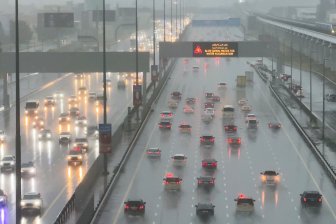When Nova Scotia reported a record number of COVID-19 cases on Tuesday, it also set a new high water mark for tests. The province reported 96 new cases Tuesday, with chief medical officer Dr. Robert Strang saying that about 20,000 tests were processed the previous day.

In New Brunswick, tests numbered just 1,220 that same day, just above the 1,080 daily average of tests reported in April. In comparison, Nova Scotia has a daily testing average of 3,239 over the same period. That’s 1.4 tests per 1,000 people in New Brunswick and 3.3 in Nova Scotia.
But Halifax-based epidemiologist Kevin Wilson says the discrepancy comes down to a difference in approach, not a failure on the part of New Brunswick’s public health apparatus.
“It’s just a difference in strategy,” Wilson said.
“I will say that New Brunswick throughout the pandemic has been really good at contact tracing. They seem like they just never give up on finding the origin of cases.”
The focus on contact tracing has allowed New Brunswick to quickly locate index cases, test and isolate close contacts.
Wilson says Nova Scotia, while still heavily contact tracing, uses a more volume based approach. He likens testing to a game of Battleship, where public health is using tests to find hidden pockets of the virus. Many will come back negative, a miss, but others will hit. The more tests, the more chances you’ll hit.
- Buzz kill? Gen Z less interested in coffee than older Canadians, survey shows
- ‘She gets to be 10’: Ontario child’s heart donated to girl the same age
- Bird flu risk to humans an ‘enormous concern,’ WHO says. Here’s what to know
- Canada updating sperm donor screening criteria for men who have sex with men
“Having more shots fired and trying to find those cases more aggressively you’re going to be able to find them faster and hopefully get them under control sooner,” he said.
That’s one reason why Nova Scotia has posted much larger test results over the month of April.
Anyone in Nova Scotia can get a test at any time, even if they don’t have symptoms, whereas New Brunswick requires someone to have at least one symptom, to be a close contact of a confirmed case or have been at an exposure site.
But another reason for the difference in testing rates can be explained by circumstance, says Newfoundland based epidemiologist Susanne Gulliver. The steady growth of cases, combined with the lockdown leads to more testing, as contacts are tracked down and public exposures are reported.
Nova Scotia has also seen massive demand for pop-up rapid testing reserved for those with no symptoms or positive contacts.
“When you can count and trace all of someone’s contacts then you don’t need to do this broad testing,” Gulliver said.
“In Nova Scotia, where you have community spread and you can’t find that patient zero then you have to open it up.”
New Brunswick has, at times, used mass testing in areas where community transmission was taking place, including most recently in the Edmundston region. Targeted testing for facilities experiencing outbreaks is also commonplace.
All residents of Magee House and the Elizabeth Parr-Johnston residences at the University of New Brunswick have been tested in recent days following an outbreak and possible exposure respectively.






Comments